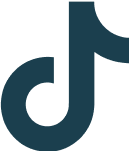WHY SHOULD YOU TRAIN YOUR CHEST?
The chest muscles are amongst the largest and strongest of the upper body. They bring with them a great aesthetic element, as a full, barrel chest that fills up a t shirt contributes very much to the ‘beach body’ look that many seek. They are also incredibly important from a practical standpoint, as they are responsible for moving the arms across the body, up and down, as well as enabling other movements like adduction, rotation and flexion. Near enough any movement you perform with your upper body will use the chest muscles to some degree. Read on to find GymNation's best chest workouts!
For example, you use the chest as a prime mover during presses like bench presses and dips. You use it as a stabiliser during back work like rows. You also use the chest every time you push anything – every time you push a door open, for example, the chest muscles are doing what they are meant to do. As they are so fundamental to healthy, normal movement, it is vital to pay due attention to the muscles of the chest as we train. Search for "Gyms in the UAE" and put your fitness first!
SIGN UP FOR YOUR FREE DAY PASS TODAY!
Most chest exercises will involve some form of push, in which the arms are pushed away from the body, or vice versa, though some exercises will involve bringing the arms and hands together in a slow clapping motion.
The chest muscles are made up of the pectoralis major layered over the pectoralis minor. The pectoralis major is the larger muscle and has two parts:
- an upper portion, called the clavicular head
- a lower portion, called the sternal head
The pectoralis minor is triangular and works in conjunction with the pectoralis major.
We often refer to these all collectively as the ‘pecs’. In addition to the pecs, chest exercises also often involve the triceps and the anterior deltoids: collectively, these three muscle groups form the prime movers of any forwards pressing motion.
Common examples of this interplay are easy to find. They include the bench press, in which a barbell is pushed away from the chest using these three muscles, and the push up, in which the body is pushed away from the floor using them. For this reason, it is very common to see the chest worked on its own individual day, using large, compound movements. A lot of muscle fibre can be worked very efficiently, in a very short amount of time, using these kinds of exercises. Get yourself a personal trainer to help you maintain your fitness levels!
CHEST EXERCISES
PUSH UPS
Push ups are amongst the best, most versatile, most efficient upper body movements. They deliver fantastic practical carryover, as they are based around one of the human body’s prime movements, and have great muscle building potential. They are also amongst the most accessible of all chest exercises.
As a push, they use chest, anterior deltoids and triceps as they are all meant to be used.
As a bodyweight movement that pushes the torso through space, rather than a weight to and from the torso, push ups are also very good for core stability, control and balance.
Main muscles used:
- Chest
- Anterior deltoids
- Triceps
- Core
- Upper back
DIPS
All chest presses will work the chest muscles. However, dips are particularly good at eliciting growth and adaptation. For best results through the pectoral muscles, and to remove the triceps a little from the effort, begin with your arms slightly bent out and don’t come up past this point. Go down as fully as possible, really opening up your collarbone and chest.
Main muscles used:
- Chest
- Anterior deltoids
- Triceps
- Core
CHEST FLYES
Chest flyes are a useful isolation movement that bring the full effort into the frontal, clapping motion for which the pectorals can be used. They have less practical carry over than larger, compound movements like chest presses and push ups, but are a great accessory and/or finisher exercise at the end of a larger upper body workout.
The angle can also be changed, when using cables, in order to work the upper or lower chest accordingly.
Main muscles used:
- Chest
Your chest is the powerhouse of your torso’s frontal plane. The muscles within it control arm and shoulder movement, generate large amounts of strength and power, and take part in many fundamental day-to-day and athletic movements. Every time you push or throw something forwards, or push yourself away from something, you are engaging the chest.
Jamie Davis
Personal Trainer, GymNation Silicon Oasis














































































